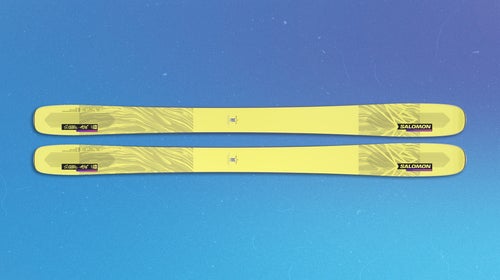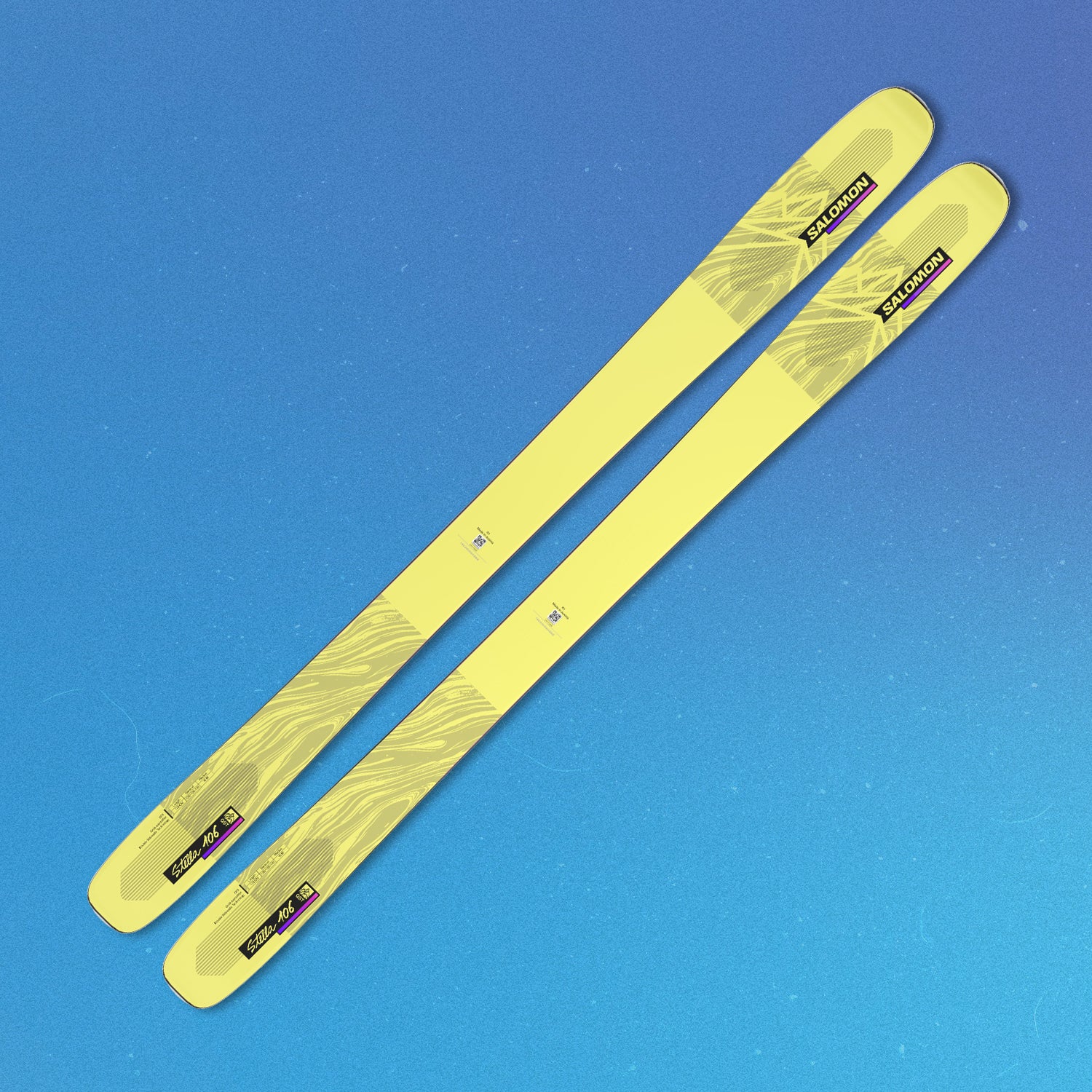This article was first published by .
The Scores (out of 10)
- Overall Score: 7.36/10
- Rank: #6
- Versatility: 7
- Crud Performance: 7.17
- Flotation: 8.33
- Playfulness: 7.33
- Responsiveness: 7.5
- Quickness: 6.5
- Hard-Snow Integrity: 6.5
- Stability at Speed: 7.33
- Forgiveness: 6.5
The Specs
- Price: $900
- Lengths: 157, 165, 173
- Dimensions: 137-106-124
- Radius: 17 (165cm)
- Weight: 3,620 g/pr
- Level: Intermediate to Expert
In a Nutshell
- Pros: Flotation (#1), Responsiveness (#5)
- Cons: Hard-Snow Integrity (#7), Quickness (#10)
I’ve been skiing the QST line for years, and was very pleasantly surprised by this year’s updates to the QST Stella 106. In fact, I’m unofficially rewarding this ski with the Most Improved award, which is saying a lot considering how popular past iterations of the Stella already were (and the QST 106—its unisex counterpart that has the exact same construction). A few veteran testers said they used to feel the QST skis could feel a bit dead, and were blown away by this new version’s pop and pizazz.
Related: Our gear editor’s favorite tools for waxing her skis at home
This new energy likely comes from adding Salomon’s Double Sidewall technology, which includes an extra piece of ABS underfoot with full length sidewalls. That platform underfoot provides more power and a better grip on the snow, thus increasing stability and allowing you to push even harder. “This ski has nice energy and is smoother than its predecessor,” noted tester and former U.S. Ski teamer Tracy Gibbons. “When you step up your energy, it turns up a notch in rebound and quickness. Don’t be afraid to push this.”
Salomon also added more taper in the tip and tail of the ski and increased the rocker, which explains why our more advanced testers felt it released so easily in and out of turns. However, testers who prefer cruisy skis reported that it still felt plenty burly, particularly in the back of the ski. This might mean that the ski is better suited to skiers who have a more forward stance when whipping it around.
Read more: Learn How the Salomon QST Stella 106 Stacked Up Against the Competition
The tweaked shape and profile also likely explain why a few testers felt it was slightly more squirrelly on the icy hardpack than its predecessor. That said, testers still reported that the Stella loves to be on edge in all types of terrain—especially for the more aggressive skier who doesn’t have a problem carving with wider skiers. And overall, most testers said it was more energetic, much easier to pop around in the bumps, and still generally well-balanced, so the changes were well worth it.
The QST line is known to hold up very well in most terrain, and this year feels no different. Salomon kept both the cork inserts in the tip of the ski and the carbon and flax stringers in the construction. That combination translates to a nice, damp ride that holds up well in the crud and mixed conditions.
At the end of the day, this is a super approachable ski and will suit a wide range of skiers. It’s made for the intermediate who wants to level up, the ex-racer who can set a deep edge and is looking to explore more off-piste, and skiers of the West who want a one-ski quiver that will rule the whole mountain. Tester and SKI editor Jenny Wiegand perhaps sums it up best: “Approachable yet still badass.” Plus, if you want to flash some color when getting air, Salomon internally refers to the new rainbow base as “Look at me, I’m in the air base technology.” Enough said.
Kelly Klein is an associate gear editor specializing in skis and bikes. She lives in Bozeman, Montana.


